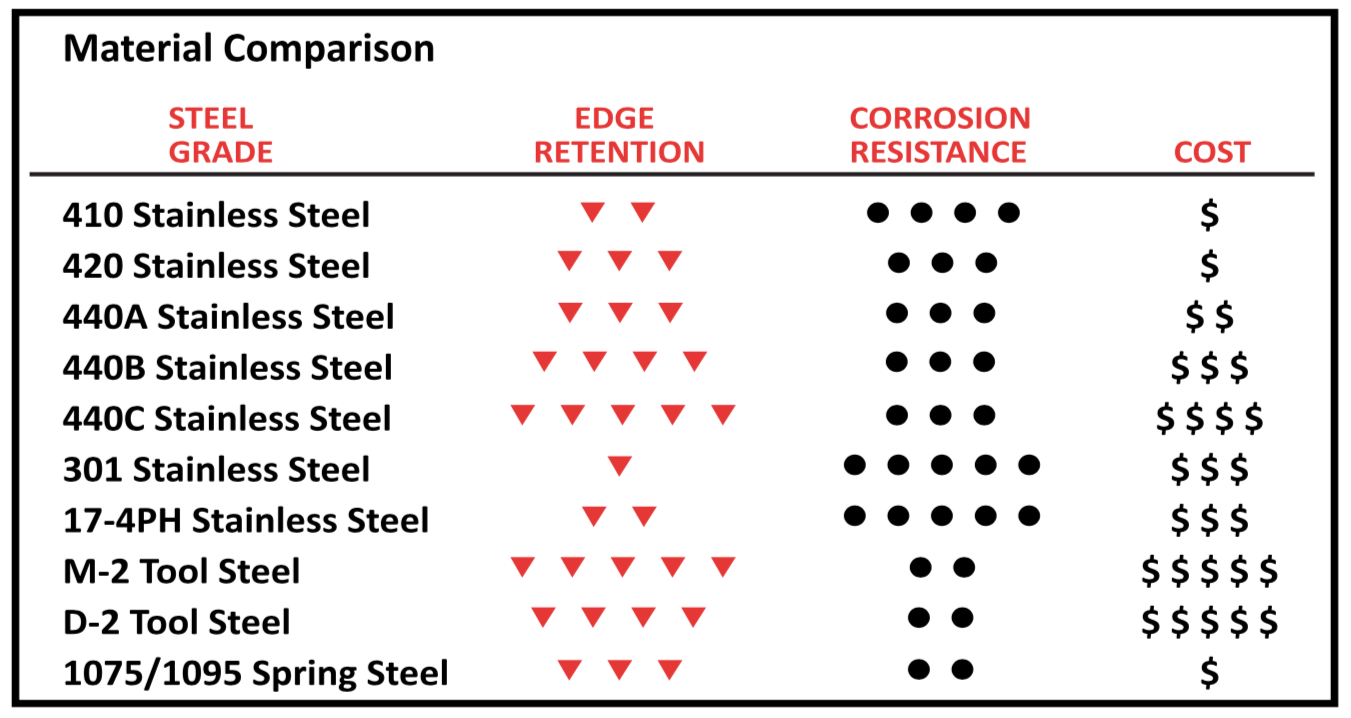How Can We Help?
Knife Material Selection
AceCo sources cutlery grade stainless steel with the best combination of properties for food processing applications. We will assist you in finding the right material for your knife. Key factors to consider are:
- Hardness: Hardness is a good indicator of a material’s wear resistance. Harder materials will provide longer knife life, but are also more brittle and prone to cracking/chipping during normal use.
- Toughness/Brittleness: Tougher materials are less least likely to chip/crack during use; the trade-off is that tougher materials will typically wear more quickly.
- Corrosion resistance: The ability to withstand discoloration or oxidization damage due to contact with chemicals common to food processing plants, e.g., organic acids, chlorine-based cleaners, process water.
- Formability: How easy is it to form the material into the desired final shape for the knife design.
- Ease of manufacturing: The ability of the material to be machined.
- Availability: Exotic materials maybe offer the ideal combination of properties for a knife design, but may be impractical due to high cost or the difficulty of sourcing the material.
Hardness vs. Toughness
For the steels typically used to make knives, there is a trade-off between material hardness and toughness. The key to material selection for a knife design is striking the right balance between these two properties.

Heat Treat
AceCo performs all heat treat operations in house. We have a staff metallurgist and a metallurgical lab to assure the quality of our heat treatment. When material is hardened discoloration may occur. If not properly care for harden material begins to chip.
Heat-treated Hardness Recommendations
| Material |
Hardness |
| 410 stainless Steel |
40 – 45 Rc |
| 420 stainless steel |
48 – 52 Rc |
| 440 stainless steel |
52 – 60 Rc |
| 17-4 PH stainless |
39 – 44 Rc |
| M-2 tool steel | 60 – 64 Rc |